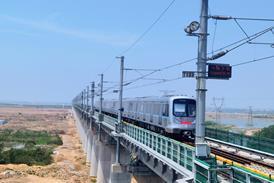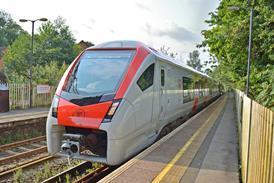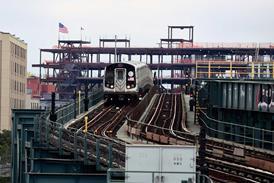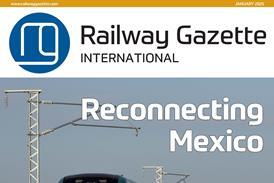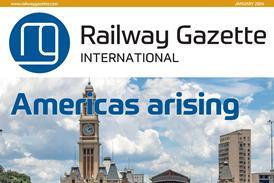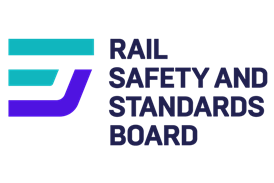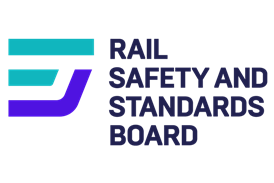FOUR MINISTERS lined up to launch the National Rail Summit in London on February 25: Prime Minister Tony Blair, Deputy PM John Prescott who also heads the department covering transport, Minister of Transport John Reid, and junior transport minister Glenda Jackson. Facing them were 180 chairmen and top executives of the companies responsible for running Britain’s privatised rail network, passenger representatives and the media.
They were there not only to signal a significant change in policy, but also to lift the profile of rail far above the modest 6% share of the transport market which it currently enjoys. Perhaps for the first time this century, a British prime minister has put an efficient railway alongside health, education and welfare reform in his personal list of priorities.
A sharp deterioration in passenger train punctuality last autumn was the trigger for a private meeting on November 26 with Railtrack and the 11 groups holding the 25 passenger franchises. Declaring two months later that ’today’s Summit is about how we end the misery and deliver for passengers’, Blair used his well-worn ’third way’ cliché to describe how he would end ’the sterile debate between wholesale privatisation and old-style state control.’
Blair did not announce a timetable for legislation to bring this change about, but change there is certainly going to be. Just hours before the summit, Prescott appointed Sir Alastair Morton (Co-chairman of Eurotunnel in 1987-96) as the new Chairman of the vestigial British Railways Board, and of the ’shadow’ Strategic Rail Authority. The new Franchising Director, whose appointment was still awaited last month, will become the SRA’s chief executive when it becomes a legal entity.
Capacity now the Big Issue
Though last autumn’s performance debacle had various causes, such as driver shortages, it forced the capacity of the network to handle future growth swiftly to the top of the agenda. Shortly before the summit, Sir Alastair told Railway Gazette International it was ’all very right and proper for ministers to hammer away at performance, but the real issue for the SRA is investment. First we have to enhance the use of existing capacity, and then find ways of enlarging it.’
He sees the SRA’s mission as making the privatised railway work as a public service, carrying a growing share of transport on a growing and improving network. It must also speak for rail in national policy debates.
But above all, his primary task will be generating the investment required to increase both the quality and capacity of the network. In the case of rolling stock, this is to be achieved initially by renegotiating franchises, though Sir Alastair warned franchisees that ’operator performance is a condition precedent for SRA entry into negotiation’.
As to infrastructure, the challenge is to secure the huge sums needed to increase the capacity of the network. A major obstacle to be overcome is track access agreements; these typically consist of a large fixed element plus a nominal payment for extra train-km run. Thus a 12% rise in tonne-km during 1997-98 brought Railtrack only 2% more revenue from freight operators.
Clearly, it is impossible for Railtrack to enhance capacity on this basis; the rules have to change. At the Summit, Chief Executive Gerald Corbett said his 1999 Network Management Statement, due on March 25, would project on-going passenger and freight growth at 3% a year. Actual growth in 1998-99 alone looks like 3·5% in passenger-miles and over 7% in tonne-miles, both well down on the 6·5% and 11·9% recorded in 1997-98. He also pointed out that by 2011 this growth ’could be worth £4·6bn per annum at standard unit values for social and environmental benefits’ - justifying a contribution from government, presumably.
Corbett also stressed partnership as the way forward. ’Splitting the industry into 100 different bits set up a new series of interfaces which the industry is only just learning to manage. Managing these interfaces adversarially in a contractual way does not work.’ Having learned ’the hard way’ with maintenance contractors that ’a more partnering approach’ worked better, he admitted that Prescott’s initiatives ’have been a catalyst starting a similar approach between Railtrack and train operators.’
Renegotiation is the key
The government has no intention of recreating British Rail, but it does want the national railway to operate as a seamless network for passengers. It is determined to secure strategic planning of the way track capacity is used if large sums of public money are going to underpin expansion - as has happened with the Channel Tunnel Rail Link rescue deal (which Morton helped put together, RG 7.98 p440).
The answer lies, first, in renegotiation of existing contracts, and only if that fails in legislation. Morton believes ’we are getting close to agreeing what we are actually going to do’ and it had to be ’a public-private partnership ... my role as I see it is in building that partnership between the parties.’
Pressure on Railtrack to comply can be exerted through the new Rail Regulator, whose appointment was also awaited last month. Reid said the Acting Regulator ’has made it absolutely plain that the profits of Railtrack are in excess of what can be reasonably expected’. Legislation will allow the government to give policy guidance to his successor.
Noting that most franchises expire in 2003-04, Reid told the Summit ’we cannot wait that long to tackle some of the most glaring inadequacies in the present system.’ He set out six yardsticks which the 11 groups holding the 25 franchises would have to meet (panel, left), with an implied threat that those which did not could fare badly when their franchise fell due for re-letting. ’Make us an offer we can’t refuse’, he urged.
Franchisees must go the extra mile
Transport Minister Dr John Reid told the Summit on February 25 that six yardsticks would be used to assess the performance of franchise holders in possible renegotiation of their franchises.
H Franchisee’s track record in terms of performance, customer service, innovation, investment and efficiency, including the views of passengers;
H The extent to which extra or accelerated investment in a proposal meets passenger needs and expectations which would not otherwise be satisfied as quickly;
H Willingness to commit to a more demanding enforcement regime and Passenger’s Charter, with higher standards of punctuality and reliability giving an improvement in customer services and more generous compensation for service failure;
H Commitment to initiatives promoting integrated transport;
H The extent to which passengers are given a greater choice in the level and standard of services via user groups;
H Value to the taxpayer; in the case of proposals for a franchise extension, the government will ’look at the pros and cons’ of extension versus re-letting by competitive tendering.

